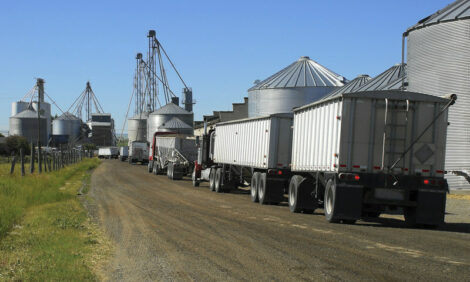



Mixed Year for Russian Meat Sector
ANALYSIS - The Russian meat sector has a mixed and varied year in 2013, with low margins in the first half of the year because of record feed prices and low prices for the main types of meat and in the second half of the year a rise in margins as feed prices reduced, writes Chris Harris.According to the Russian market analysts, the Institute for Agricultural Market Studies, IKAR, the weakest part of the sector by the end of the year was the poultry sector because oversupply and low prices forced values down to rock bottom.
Over the year, Russia’s self-sufficiency in meat rose from 72 per cent to 76 per cent, although IKAR says that different methods of calculating self-sufficiency could make the figures a little arbitrary.
However, Russia is gradually reducing its dependence on meat imports.
In 2007, Russia was among the leading commodity importers in the world. Last year, the country had fallen to fifth place.
The leading exporter of meat to Russia is Brazil, which last year shipped 400,000 tonnes of meat into the country.
However, neighbouring states such as Belarus are moving up the trading ladder, which last year exported 300,000 tonnes of meat products to Russia.
Last year also saw a gradual fall in meat exports from Russia. Exports of meat including offal reached 50,000 tonnes last year with central and South East Asia being the main export markets.
Despite the problems with African Swine Fever in the Russian pig herd, Russia saw a gradual rise in exports of pig meat to South East Asia, which last year were between 8,000 and 10,000 tonnes.
The main destination for pig meat exports has been China and in particular Hong Kong.
There was also a growth in finished meat product exports, which IKAR estimates might have reached 45,000 tonnes in 2013. More than 80 per cent of Russian meat product exports went to Kazakhstan.
IKAR also estimated that domestic meat production is growing at a rate of 5.7 per cent a year, with a growth rate of 10 per cent in the pig sector and about six per cent in the poultry meat sector.
However the cattle sector saw a drop in production of about one per cent.
Pig Meat
The pig sector is continuing to evolve although economic growth in the sector is fairly static, according to IKAR.
Much of the development has been on existing farms and properties and there has been little greenfield build.
IKAR says that by the end of 2013, production in all forms of production units will hit 2.81 million tonnes – a rise of 10 per cent. Growth in the corporate sector will reach 15 per cent. This rapid growth in the corporate industrialised production is also forcing a decline in the numbers of smallholdings, largely because of the problems surrounding African Swine Fever.
Despite the success of domestic producers to increase production in Russia, the country remains a major importer.
In 2013, the imported share of the Russian pig meat market was 29 per cent. However, growth in domestic production is expected to be between three and four per cent a year and this year, the increase in production is forecast to reach more than 350,000 tonnes live weight.








